Region:Asia Pacific & Japan
Client:Siemens Healthineers
Industry:Healthcare
GDC Siemens Healthineers (SHS) transforms the automation landscape for SHS South Korea

40+
Total Processes Assessed
24+
Completed Projects
~19000+
Business Hours Given Back to Business
Client Overview
Siemens Healthineers is a team of 66,000 highly dedicated employees worldwide who are innovating every day, truly shaping the future of healthcare. They expand precision medicine through solutions that make diagnosis quicker and more accurate, reduce unwarranted variations, and enable personalized therapies, so that high-value care is provided for every patient at the right time. Their strong medical technology portfolio, including digital platforms and solutions, are uniquely placed in the in-vivo and in-vitro markets to combine and analyze pertinent data and knowledge and to turn it into usable, actionable information for clinical decision making.
The automation team was incubated in SHS GDC, India in the year 2019 on account of increase in demand for digitalization and process automation.
“It was the right time for us to have a dedicated team for this. Automation is the way forward and we wanted to start on this journey in earnest,” says Rizwan Syed, Head, SHS IT IDA GDC
In the past two years, the GDC RPA team along with Global Automation team at SHS IT has worked on 24 projects across the world and delivered enormous benefits to the business. They started off doing a few projects in the Asia Pacific region. However, impressed by the quality of implementation and the savings delivered, they became the go to service provider esp. for Japan, South Korea, Australia and India. The dependence on local automation service providers has reduced drastically. The GDC Automation team also supports the SHS Global Automation team through quality automation developers.
Talking about his biggest challenge in this journey, Rizwan is quick to note that with RPA, the biggest challenge is the set-up of a Center of Excellence (CoE) like structure to develop and maintain the bots in a standard manner as every business unit wants to run its own robots in silos.
“Everyone talks about how amazing automation is! But problems arise once different teams and departments create multiple process automations. Lack of standardization and siloed approach can quickly defeat automation programs. A centralized system to standardize and govern the automated processes is a must!” adds Rizwan
How South Korea became a case study for a need of a centralized system for the various RPA processes
SHS South Korea (SK) was one of the first regions to take a lead in digitalization of their existing systems and processes for their businesses. As a result, they initiated various digital and automation programs. One of them was identification and automation of standard and repeatable processes using UiPath Platform.
Key processes were identified across various divisions like Order to Cash, Customer Service etc. These processes were then automated using UiPath. The automations were primarily attended ones as the business users wanted to have more control with them.
Fast forward a couple of years, the number of processes automated using UiPath increased to 30+ in number. A new set of problems crept up. Primarily, the processes were scattered across internal sub-divisions with named individuals managing processes on their own laptops / desktops. For SHS SK, keeping a track of spends, information security and compliance requirements, license expirations as well as provisioning backup for team members (with processes running on their laptops) was proving to be a difficult task ahead.
How leveraging unattended bot services and central monitoring solved the above problem The GDC organization, primarily operating out of Bangalore, India and Slovakia took up this project in consultation with the Global Automation team at SHS IT. A core team consisting of RPA experts, Project Manager and Business IT representative was established. The team conducted due-diligence and gathered the list of all the processes currently being run using attended UiPath automations.
Some of the key challenges encountered by the team were incomplete documentation, documentation in South Korean language, changes to the source code based on best practices, information security gaps. While they were trying to figure this out, COVID hit the world. For them, that became the biggest challenge. However, the team ensured continuity of work, ensured minimal disruption and readied back-up team members in the absence of key technical resources according to Indroneel Ghatak, Head, SHS IT IDA GDC DES Automation Services.
As a next step, all the processes were examined and assessed for Information Security related compliance by going through the necessary procedures as mandated by the Information Security Officer.
The processes were grouped into Waves based on the business units to which the processes belonged. There were 4 waves defined for a total of 30 processes. Each wave was then prioritized based on Business urgency v/s Impact and then migrated in a time-bound manner. Project steering call was established to ensure smooth progress of the project and blockers were addressed in a speedy manner. The project was successfully delivered with 30+ processes running in an unattended manner leveraging Orchestrator set-up.
How UiPath helped them through this all?
“Our experience of working with UiPath on this was absolutely wonderful. UiPath ensured the availability of licenses and supported us in a timely manner to resolve all set-up related issues. They take time and effort to understand the customers need and work with them, not just for them,” says Indroneel
Business impact
A mini CoE was established that enabled the central monitoring, management and maintenance of all the RPA processes in their organization. The key benefits derived were as follows:
An “Automation as a Service” approach towards deploying and scaling automations End to end monitoring of all the processes using the orchestrator
Adherence to security and compliance procedures
Robot license renewals, software patch upgrades
Unattended robots freeing up precious time of the employees
Savings in hardware that was earlier utilized by attended bots
Robot license renewals, software patch upgrades
Unattended robots freeing up precious time of the employees
Savings in hardware that was earlier utilized by attended bots
Future plans with UiPath
According to Rizwan, they plan to expand their automation footprint across Asia Pacific region, identify and deliver key process automation initiatives and hire skilled UiPath resources. He also mentions as a next step, the GDC is exploring use cases that leverage AI ML packages, chatbots with NLP etc. in conjunction with UiPath automations.
Ready for your own case study?
Speak to our team of knowledgeable experts and learn how you can benefit from agentic automation.
